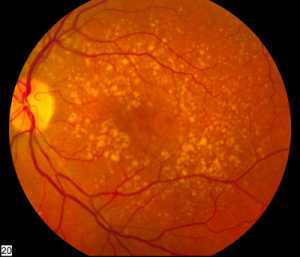
21 Aug Air Pollution from Traffic Linked to Age-Related Macular Degeneration
MedicalResearch.com Interview with:
Professor Suh-Hang Hank Ju, PhD
Kaohsiung Medical University
Taiwan
MedicalResearch.com: What is the background for this study?
Response: Nitrogen dioxide (NO2) and carbon monoxide (CO) are 2 major traffic pollutants, which have been shown to increase a risk for respiratory and cardiovascular diseases. We previously showed that chronic exposure of NO2 is also associated with dementia. age-related macula degeneration (AMD) is a leading cause of blindness.
Given the increase of traffic pollutants in many urbanized cities, we investigated whether these two traffic pollutants are associated with the development of age-related macula degeneration in Taiwan.
MedicalResearch.com: What are the main findings?
Response: The main findings are those with the highest level of exposure to NO2 (more than 9825.5 ppb) were nearly twice as likely to develop age-related macula degeneration as those exposed to the lowest level ( less than 6563.2 ppb). Similarly, people who were exposed to the highest level of CO (more than 297.1 ppm) were also more likely to develop AMD than those exposed to the lowest level ( less than 195.7 ppm).
MedicalResearch.com: What should readers take away from your report?
Response: Since primary sources of NO2 and CO in the cities are motor vehicle exhaust and thermal power station, keeping away from these major pollution sources will reduce the risk for age-related macula degeneration.
Our results show that the risk only occurred in people living in the highest quartile of pollution (we divided the pollution into 4 levels). This means if we can reduce the exposure and try not to be in the highest exposure group, the risk can be significantly reduced. Therefore, try not to go outside during the heavy traffic hours, do not jog on the road side when there are a lot of cars.
MedicalResearch.com: What recommendations do you have for future research as a result of this work?
Response: Validation these results from different data is necessary. In addition, it is also important to find the exposure threshold for developing age-related macula degeneration.
MedicalResearch.com: Is there anything else you would like to add?
Response: The air pollutant data are from ambient air quality-monitoring stations, which do not necessarily reflect the exposure of each individual. Therefore, future studies using better assessments of air pollution for each individual will provide more direct evidence for the link between these pollutants and age-related macula degeneration.
No disclosures
Citation:
Kuang-Hsi Chang, Po-Yuan Hsu, Chun-Ju Lin, Cheng-Li Lin, Suh-Hang Hank Juo, Chung-Ling Liang. Traffic-related air pollutants increase the risk for age-related macular degeneration. Journal of Investigative Medicine, 2019; jim-2019-001007 DOI: 10.1136/jim-2019-001007
JOIN OUR EMAIL LIST
[mailpoet_form id="5"]We respect your privacy and will never share your details.
Last Modified : [last-modified]
The information on MedicalResearch.com is provided for educational purposes only, and is in no way intended to diagnose, cure, or treat any medical or other condition. Always seek the advice of your physician or other qualified health and ask your doctor any questions you may have regarding a medical condition. In addition to all other limitations and disclaimers in this agreement, service provider and its third party providers disclaim any liability or loss in connection with the content provided on this website.
Last Updated on August 21, 2019 by Marie Benz MD FAAD
